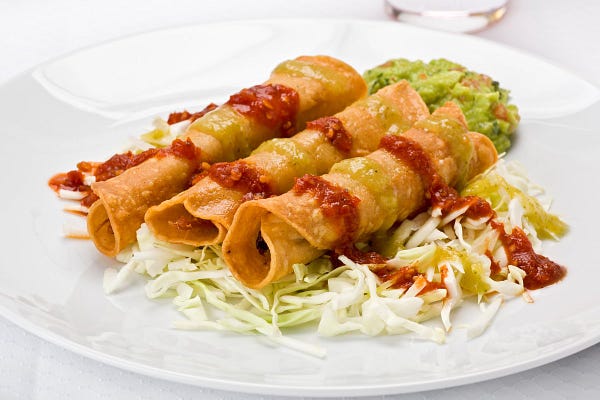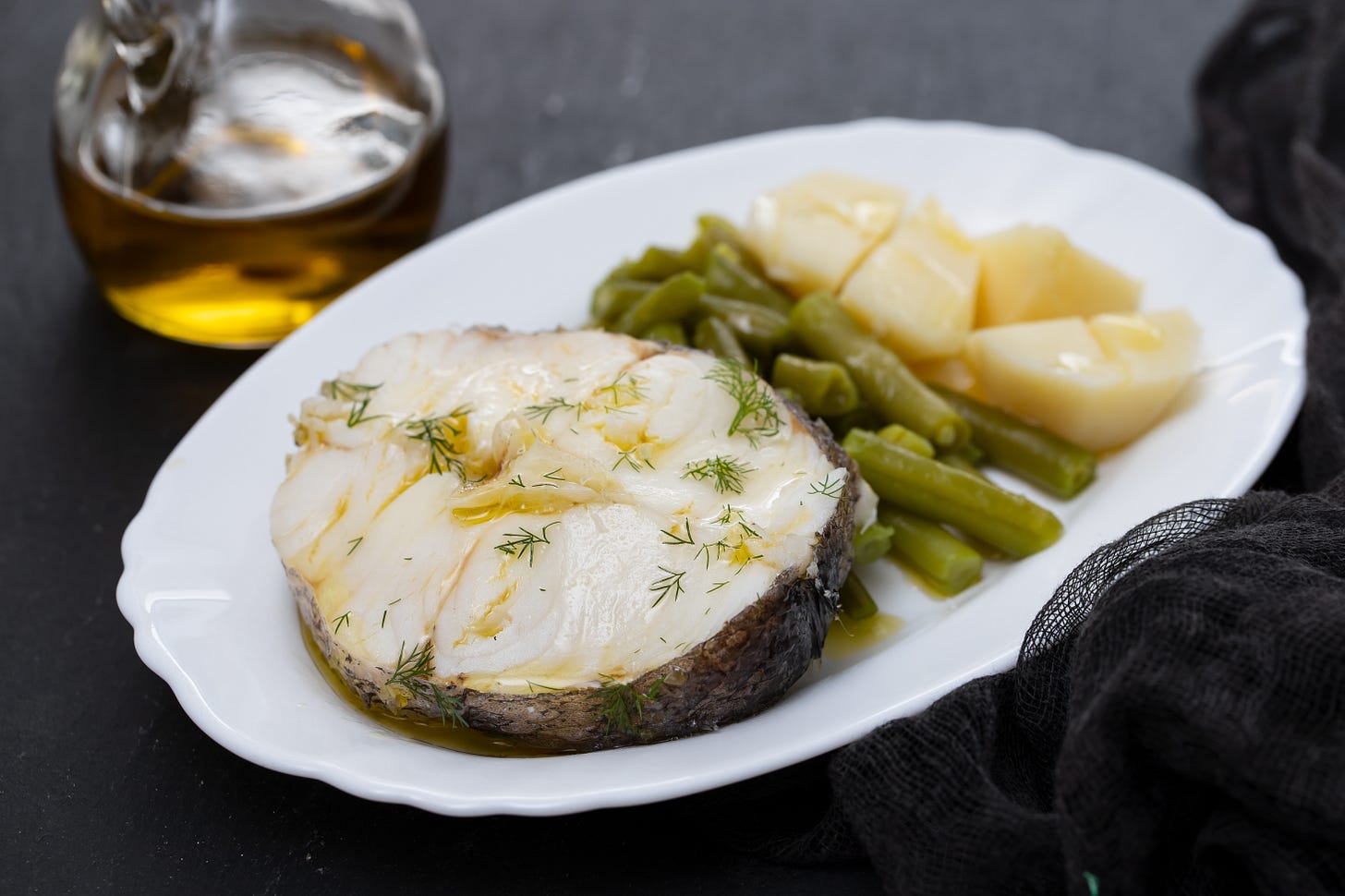Paid subscribers, your contribution lets me pay writers a much better-than-average rate. Thank you! (If you haven’t yet supported Smart Mouth and its writers, subscribe here).
More Food Media:
He raises a good question: do you call these flautas or taquitos?
Play With Fire and Eat Some Fish in Wisconsin
By Stacy Brooks
At first, it's a modest fire, blazing beneath a cauldron filled with fish and potatoes. Then the boilmaster pours on some kerosene, and the flames leap to frightening proportions. The cauldron boils over, water foaming and cascading down the sides. This isn't a culinary disaster — it's a Door County fish boil.
Door County, Wisconsin is located on a peninsula that juts into Lake Michigan, giving the area a coastal feel. Hundreds of years ago, Europeans who traveled to the Great Lakes noted that the region's indigenous inhabitants boiled lake whitefish. For instance, 17th century French military officer Lom D’Arce de Lahontan described a four-course feast hosted by the Potawatomi that featured “two whitefish boiled in water.” (The Potawatomi are among the indigenous peoples who have ancestral and contemporary connections to Door County.)
Throughout the 19th century, Scandinavian immigrants settled in Door County, and like the indigenous inhabitants they displaced, they had a cultural tradition of boiling fish. By the late 1800s, fish boils had become an economical way to feed a group of hungry workers or partiers.
In the mid-20th century, savvy restaurateurs started marketing the unique specialty to tourists. Lawrence and Annette Wickman started the first commercial fish boil at the Viking Grill, and the White Gull Inn was another early adopter. Today, several restaurants offer fish boils, typically pairing boiled lake whitefish, baby potatoes, and onions with coleslaw, rye bread, and a slice of pie made from locally-grown cherries.
Diners arrive at least 30 minutes before dinner in order to watch the preparations: a fish boil is as much (if not more) about the cooking process as the finished meal. While stoking the fire and cooking the meal, the boilmaster chats with the onlookers, explaining the various steps. It all culminates in the theatrical fiery boilover, which serves a practical purpose: as the fish cooks, its oils rise to the surface. When a splash of kerosene is added to the fire, the abrupt increase in temperature spills water and oil over the sides of the cauldron, leaving behind perfectly cooked fish.
For some, that pyrotechnic spectacle is the highlight, and they pass on the finished product (some fish boils offer alternative main courses like roasted chicken). Even for those who enjoy seafood, boiled fish may seem old-fashioned, the flavor too understated. But you’re there for the cultural immersion, so give the fish a try. 🐟
Check out a fish boil at these Door County standbys:
At the Viking Grill in Ellison Bay, enjoy a fish boil where the modern iteration of the tradition began.
The Old Post Office Restaurant in Ephraim is located in a charming historic building.
Unlike most fish boils, the White Gull Inn in Fish Creek skips the onions, feeling that they overwhelm the delicate flavor of freshly caught fish.
Marmite: From Britain with Love
By Jennifer Cole
Marmite may well be the queen of umami. Originally supplied in potbelly-shaped earthenware pots, the spread takes it name from a similarly shaped French pot called a marmeet. (Its distinctive bulbous glass jars are a nod to its past.) Not to be confused with Vegemite (its Australian cousin), Marmite has an unappetizing brown color that, with its tangy soy sauce-meets-wasabi taste is sadly, for some, unpalatable. Because of its strong pungent smell people often refuse to try it after catching a whiff. That’s Marmite: you either love it or run away repulsed.
Discovered in the late 19th century by German scientist Justus von Liebig, Marmite is made from fermented yeast leftover after brewing beer. In 1902 the Marmite Food Company opened in Burton-upon-Trent, Staffordshire England. Its recipe of salt, spices, onions, and carrots proved so high in B-complex vitamins that it was included in the ration packs of British soldiers during the First World War to stem the rise of beriberi, a vitamin B deficiency. By the 1920s, Marmite was a popular British staple.
As PB&J is the quintessential North American sandwich, there’s nothing more British than a Marmite and cucumber sarnie. Queen Elizabeth reportedly enjoys it spread on a cracker or buttered toast; the product holds a Royal Warrant and has supplied to the Royal Household for over five years.
In North America Marmite is sold in European import or health food stores, and of course on Amazon. There are milder versions, and Marmite-flavored potato chips have been attempted. You’ll know immediately whether you love it or hate it. 🇬🇧
If you enjoy the newsletter today, please forward it to someone who’d enjoy it, and tap the heart icon above or below, which will help me reach more readers. I appreciate your help, y’all!
This newsletter is edited by Katherine Spiers, host of the podcast Smart Mouth.
A TableCakes Production. Want to contribute? Here are the submission guidelines.









